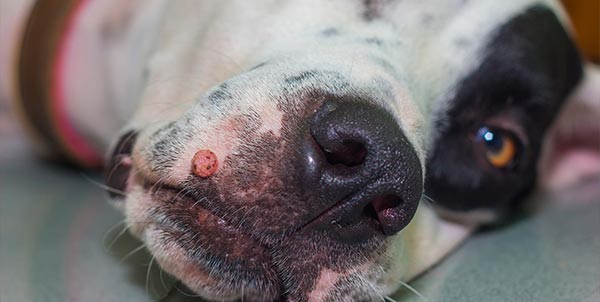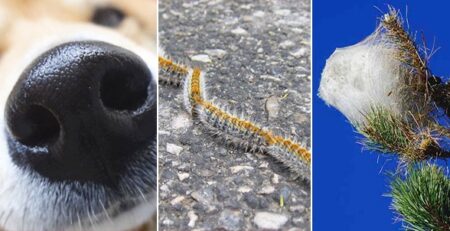Cutaneous papillomas (known as warts) on skin and mucous membranes in dogs are the manifestation of a real disease called papillomatosis. How to recognize and treat these dog skin growths?
The occurrence of dog warts or skin papillomas is caused by the papilloma virus, a species-specific virus that affects only dogs.
So, canine papilloma is not transmissible to humans or cats, animals in which papillomatosis very rarely occurs.
Papillomas are generally self-limiting benign tumors that usually heal spontaneously.
However, the possibility of neoplastic evolution into the malignant form should never be underestimated.
What shape are warts in the dog?
Dog papillomas or warts occur as raised masses over the skin or mucosa in a cauliflower or polypoid shape.
They have a dark or pinkish leathery texture, are irregularly shaped and vary in size; they are usually painless.
The localization of warts in the dog
In general, papillomas make their appearance in the mucous membranes of the mouth, pharynx, or on the skin (muzzle, lips, eyelids, the space between the fingers, or the pads under the paws).
Papilloma virus in dogs can localize to certain internal organs (intestines and bladder), causing consequences directly proportional to the size of the papillomas: the larger the mass, the more severe the symptoms.
Warts that develop in the mouth can cause:
- Halitosis
- Hypersalivation
- Pain and therefore lack of appetite
- Ulcers
- Hemorrhages
- Difficulty swallowing
- Partial or complete obstruction of the pharynx
Instead, those that develop in the eyes can cause the dog to blink continuously and cause visual changes, conjunctivitis and pain.
How does transmission of the papilloma virus that causes warts in dogs occur?
Transmission occurs by direct dog-to-dog contact through saliva or other biological fluids.
However, this virus is extremely resistant in the outdoor environment and is therefore also able to spread by contact with contaminated material such as food and bowls.
The incubation period can vary from one to two months, and the animal can be virus positive asymptomatically while the manifestation of symptoms occurs only after incubation.
Dogs with significant deficiencies in the immune system i.e., young and old are most at risk.
The diagnosis and course
Your trusted veterinarian can certainly easily recognize a papilloma, but to remove any doubt and assess the presence of masses on internal organs, a histological test and ultrasound may be necessary.
The self-limiting form culminates in spontaneous recovery within a few months.
So, the treatment is to wait for the natural course of the disease.
Similarly to human papilloma, papilloma in dogs can reappear, and the infection takes a few months before fully regressing.
What treatment against warts in the dog?
If the warts swell, open up to form ulcers, or if the dog has vision problems or difficulty swallowing and eating, surgical treatment is needed to remove the mass.
Surgical treatment, therefore, is recommended only if the papilloma creates functional problems for the dog and never for “cosmetic” purposes.
Absolutely NO to home remedies!
The hope that this condition can be cured by DIY remedies is absolutely vain.
Rather, avoid taking personal initiatives or resorting to folk tradition substances and ointments.
What you can certainly do to prevent the onset of diseases resulting from immune system deficiencies is to support and strengthen it with specific products that only your trusted veterinarian can point out.
For regular check-ups and checkups, rely on the Veterinary Doctors on our Staff who are always available to you.
In this regard, we would like to remind you that Clinica La Veterinaria is always open h24 every day including holidays and with emergency service from 8 pm to 8 am.
For the joy of seeing them HAPPY











